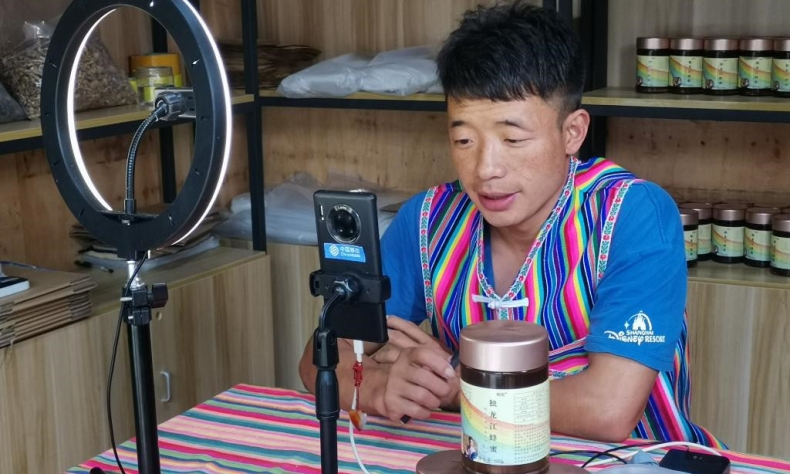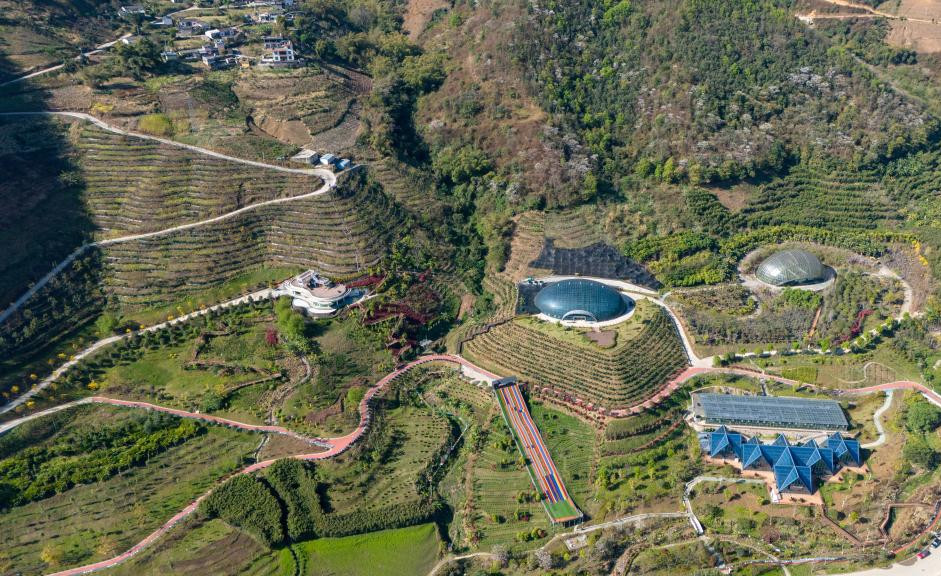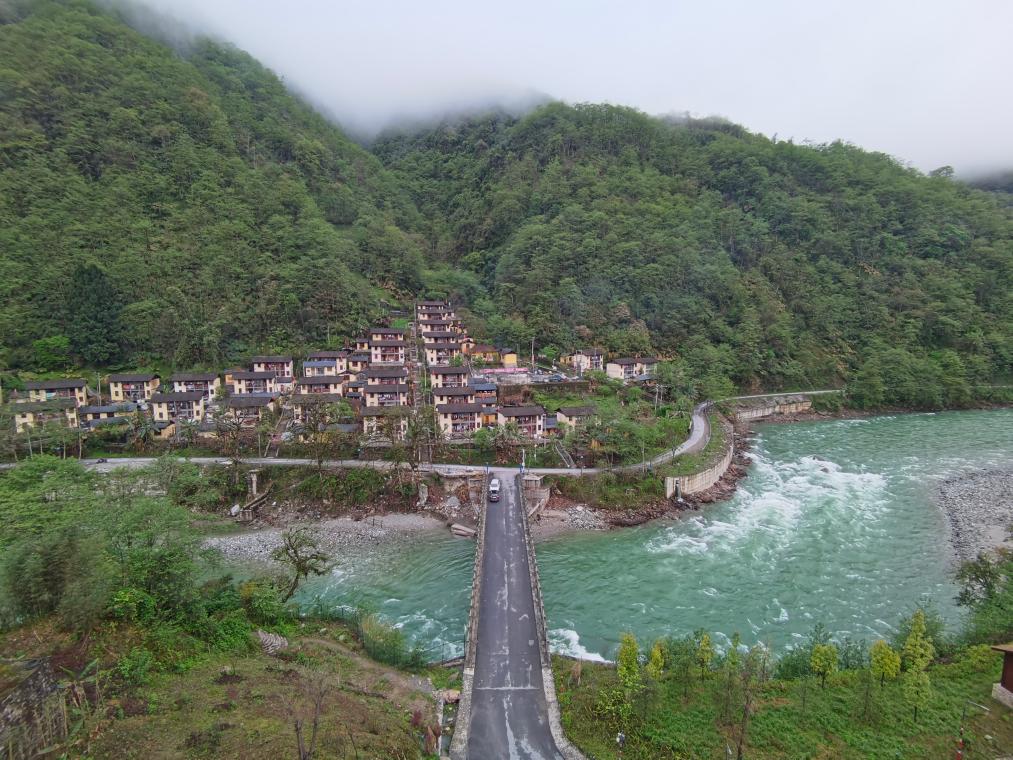Feasible Poverty Eradication Initiatives in Remote Chinese Region

What China offers is not a ready-made solution, but a case for what’s possible when vision, coordination and continuity meet.
I come from Brazil, a country where poverty isn’t just part of our history but remains part of our present. I grew up surrounded by it. It was in the streets, in the news, in the small daily negotiations people made just to get by. Inequality was so familiar it started to blend into the background, even when you tried not to let it.
For years, I studied China from afar, as an international relations scholar for more than a decade, reading five-year plans, analyzing development reports and trying to understand what had enabled such rapid, large-scale transformation. But in January 2024, that distance collapsed. I transitioned into journalism, joining the China International Communications Group as a foreign editorial consultant. My role shifted from analyzing China to helping share its stories.
That shift became especially meaningful when I visited Nujiang Lisu Autonomous Prefecture in Yunnan Province, for the 2025 International Forum on Poverty Governance and Global Development. What I found there was more than case studies or success metrics. I saw stories that felt deeply familiar to me as a Brazilian. And I also saw approaches that challenged what I thought was possible.
From the outside, China’s poverty alleviation is usually summarized in figures. Nearly 800 million people lifted out of poverty as of 2020 as part of the country’s first centenary goal of building a moderately prosperous society in all respects on the occasion of the 100th anniversary of the founding of the Communist Party of China that same year. Entire regions transformed through infrastructure, social policy and long-term planning.
But numbers alone can’t teach you what it feels like to walk through a school where every student gets free meals, or to meet women who now make their income by sewing baseballs or weaving traditional ethnic cloth that is sold abroad. These are the moments that make the statistics human.
In Nujiang, I saw policy turn into action. I saw the difference between imagining solutions and living them.
Spices, coffee, science and entrepreneurship
In Shangjiang Town in Lushui City, I visited the Nujiang Green Spice Industrial Park. It’s run by the China Communications Construction Co. and covers 664 hectares, 65 of which are already developed. This isn’t a typical industrial zone. It’s designed around a spatial model that integrates production, research, tourism and markets into one space.
Red cardamom is the star here, valued for its versatility in snacks, cosmetics and traditional medicine. In 2024, it generated 2.29 billion yuan ($315 million) in revenue. But it’s not the only crop thriving. More than 140 other spice varieties are grown in the park, along with a burgeoning local coffee industry.
Coming from Brazil, a coffee powerhouse, I was genuinely impressed by the flavor of Yunnan coffee. It’s the best I’ve had outside Brazil. What stands out even more is the creativity around it. Producers aren’t just selling beans or powder; they’ve developed coffee-based snacks and even coffee honey. That kind of innovation turns a product into a platform, and creativity into income.

Speaking of innovation brings me to the park’s functions. It’s not just about growing and harvesting. It’s about creating a collaborative ecosystem where farmers, scientists, companies and tourists all have a place. The park works closely with the Chinese Academy of Tropical Agricultural Sciences to develop new strains, improve yields and teach sustainable methods.
More than 1,000 people work here, many part-time, allowing for flexible participation. There’s also a training center, a startup incubator and infrastructure that supports small business development. Visitors can walk the fields, taste the spices, and see firsthand how rural industry can thrive when it includes everyone.
For Brazil, where rural development often struggles with fragmentation and weak infrastructure, this model feels both inspiring and urgently relevant. It’s not just about growing crops. It’s about rethinking how communities and economies can grow together.
Drung weaving: culture as livelihood
With a population of more than 7,300, the Drung is one of the least populous of China’s 56 ethnic groups. The Drung people mainly live in Nujiang.
When I visited the Drung community, I expected to learn about a tradition. I didn’t expect to see how that tradition was being transformed into a modern, income-generating craft with global reach.
The Drung people have long passed down the art of weaving, with each fabric telling a story through color, texture and technique. But until recently, these textiles rarely left the region. That began to change in October 2024, when Zhimeng, a locally supported company, started working with community leaders and government partners to turn weaving into a viable livelihood.
So far, over 3,500 meters of fabric have been produced, priced between 80 yuan ($11) and 150 yuan ($21) per meter. Around 110 women are engaged as artisans, building income through skills that are deeply rooted in their identity.
As proudly shared by Huang Jieying, First Secretary of Tuanjie Community in Lushui’s Liuku Sub-district, which is home to people of seven ethnic groups including the Drung, “Starbucks has shown interest in incorporating Drung elements into its products. A partnership is already in the selection phase,” she said.
This isn’t just an economic project. It’s cultural empowerment. Here, weaving connects past and present, pride and profession. The women I met weren’t just preserving a tradition. They were turning it into a future. And what stood out to me was that dignity was everywhere—not abstract or symbolic, but practiced and visible in the hands that shape these patterns and the networks that support them.

A smarter, fairer school system
At Minzu Middle School in Lushui, I saw what it means to invest in education—not just in buildings or curriculum, but in students’ lives. The school, founded in 1986, serves over 1,300 students, 99 percent of whom belong to minority ethnic groups such as the Lisu and Drung.
Tuition and meals are fully covered, so no student is left behind for financial reasons. That alone would be impressive. But what caught my attention was how technology is used not to replace educators, but to support them.
With backing from the China Communications Construction Co. and information technology company iFLYTEK, the school has adopted smart classroom solutions—real-time learning feedback, personalized education plans and multimedia instruction. Teachers can quickly identify where a student is struggling and adjust the lesson accordingly. Students interact with AI-based assistants, tablets and digital platforms that track progress and suggest study strategies.
When we arrived, students welcomed us with traditional dances and music. We were gifted a painting made in art class. I still remember the one I received—Sunset Over the Lotus Pond. I wish I knew the student who painted it.
This visit reminded me that high-tech and high-touch can exist together. That education rooted in cultural pride is not a luxury, but a necessity.
A mirror, not a model
As I moved through these places—schools, factories and workshops—I kept thinking about Brazil. The geography is different, but the challenges are similar. What China offers is not a ready-made solution, but a case for what’s possible when vision, coordination and continuity meet.
I left Nujiang feeling more connected, not just to China, but to Brazil. What I saw wasn’t perfection, but progress. Not slogans, but strategies. As a journalist, I’m committed to telling those stories with empathy and clarity. As a Brazilian, I carry a quiet hope that we, too, can learn, adapt and build.
Fighting poverty isn’t a moment. It’s a process, one that demands honesty, imagination and a shared vision of dignity.
Nujiang reminded me that transformation is possible when people and policy align. And that sharing these stories isn’t just about reporting change. It’s about helping make it happen.
The author is a Brazilian researcher of international relations based in Beijing.
 Facebook
Facebook
 Twitter
Twitter
 Linkedin
Linkedin
 Google +
Google +










